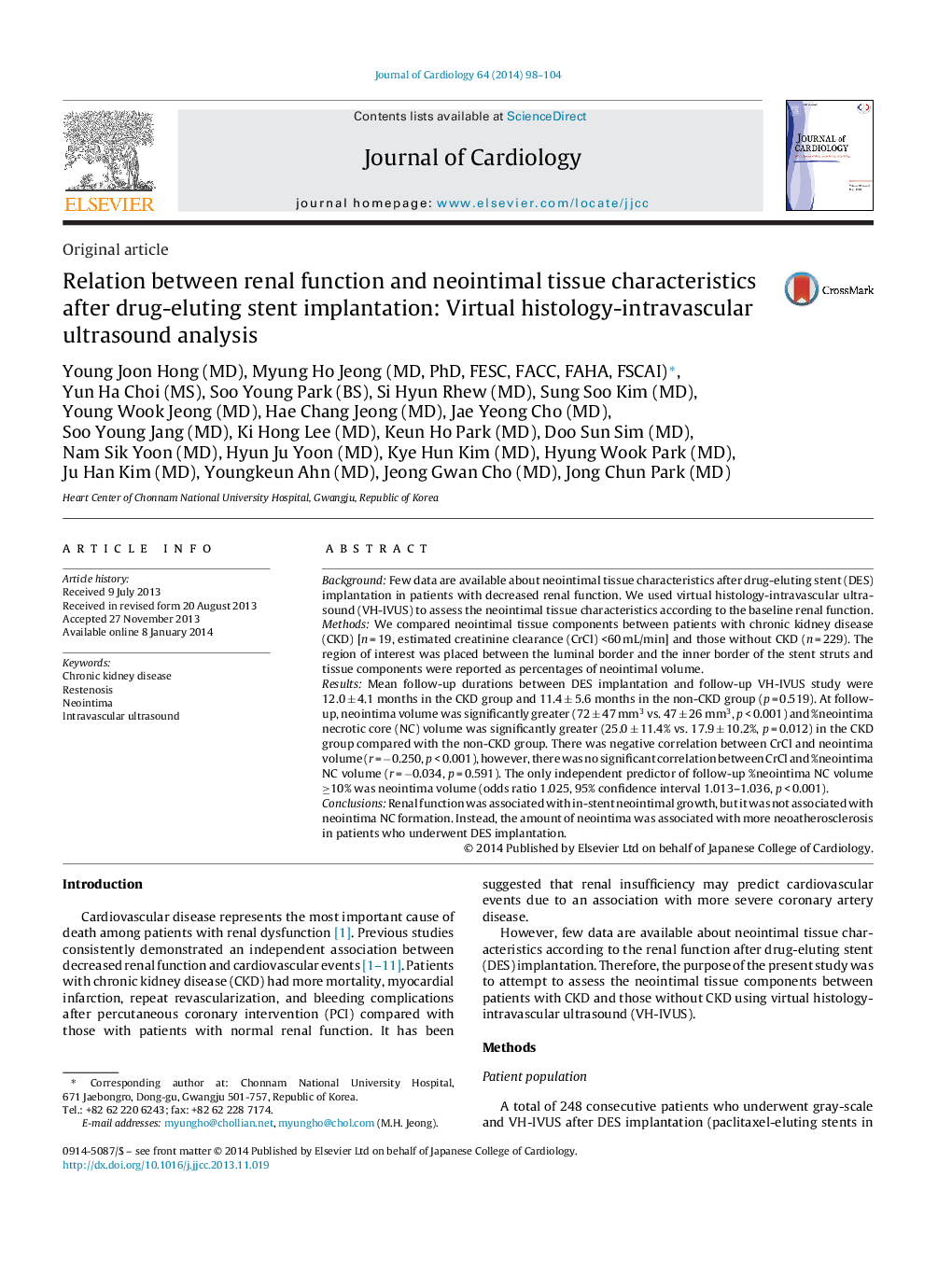| Article ID | Journal | Published Year | Pages | File Type |
|---|---|---|---|---|
| 2962957 | Journal of Cardiology | 2014 | 7 Pages |
BackgroundFew data are available about neointimal tissue characteristics after drug-eluting stent (DES) implantation in patients with decreased renal function. We used virtual histology-intravascular ultrasound (VH-IVUS) to assess the neointimal tissue characteristics according to the baseline renal function.MethodsWe compared neointimal tissue components between patients with chronic kidney disease (CKD) [n = 19, estimated creatinine clearance (CrCl) <60 mL/min] and those without CKD (n = 229). The region of interest was placed between the luminal border and the inner border of the stent struts and tissue components were reported as percentages of neointimal volume.ResultsMean follow-up durations between DES implantation and follow-up VH-IVUS study were 12.0 ± 4.1 months in the CKD group and 11.4 ± 5.6 months in the non-CKD group (p = 0.519). At follow-up, neointima volume was significantly greater (72 ± 47 mm3 vs. 47 ± 26 mm3, p < 0.001) and %neointima necrotic core (NC) volume was significantly greater (25.0 ± 11.4% vs. 17.9 ± 10.2%, p = 0.012) in the CKD group compared with the non-CKD group. There was negative correlation between CrCl and neointima volume (r = −0.250, p < 0.001), however, there was no significant correlation between CrCl and %neointima NC volume (r = −0.034, p = 0.591). The only independent predictor of follow-up %neointima NC volume ≥10% was neointima volume (odds ratio 1.025, 95% confidence interval 1.013–1.036, p < 0.001).ConclusionsRenal function was associated with in-stent neointimal growth, but it was not associated with neointima NC formation. Instead, the amount of neointima was associated with more neoatherosclerosis in patients who underwent DES implantation.
